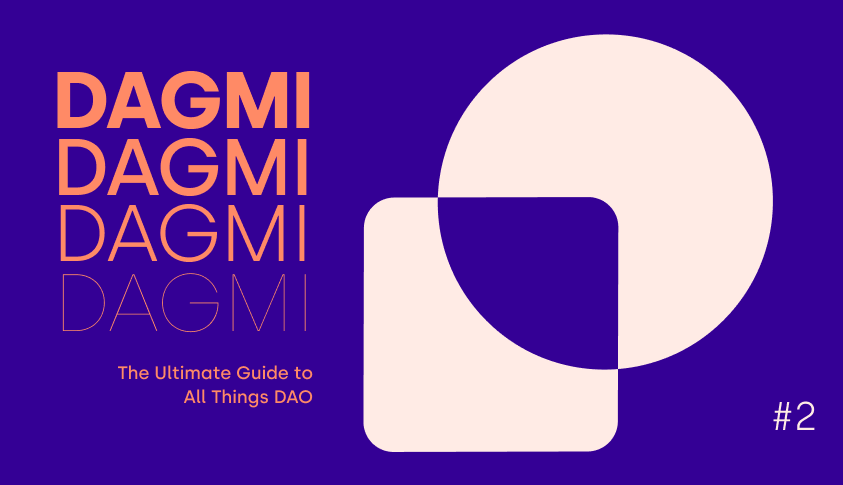DAGMI #2: Types of DAO Governance Models

Welcome back to DAGMI, the ultimate guide to all things DAOs and an educational research series by the Commonwealth team. In this edition of DAGMI (#2), we’ll be going over the different types of DAO governance models to better understand how DAOs make decisions and how governance impacts their workflows.
Governance models are the system of rules and regulations that make up the decision-making processes and workflows of an organization. Contrary to corporations where decision-making processes are typically and traditionally hierarchical, the decentralized nature of DAOs allows them to be self-managed via their governance model.
Governance models enable DAOs to manage resources and make collective decisions in a decentralized manner. DAOs run on smart contracts that automatically execute the rules and regulations set by their members. These members are often token holders who can propose and vote on decisions. Here are some of the different governance models that can be used by a DAO:
Token-Weighted Governance
Token-weighted governance is when voting power is determined based on the number of tokens delegated to each address. By being token-holders, DAO members can vote on proposals and be a part of the decision-making process. With a token-weight governance model, the voting process is usually proportional, meaning that each member’s voting power is proportional to the number of tokens they hold.
However, in some governance models, voting power can also be delegated from one address to another. For example, owning Compound’s governance token COMP allows the owner to delegate voting rights to the address of their choice; whether it be their own or a third party’s address. Anyone can participate in Compound governance by receiving delegation, without needing to own COMP. Since voting power is based on the number of tokens delegated to each address, users must submit a delegation transaction before their tokens can be included in governance votes.
Market-Specific + Vesting Governance
In this governance model, one token does not necessarily equal one vote. Instead, the voting power per token can vary based on the policies set in place by a DAO.
For example, Curve uses an escrow and vesting mechanism to apportion voting power to token holders. By locking their tokens for an extended period, their tokens accrue voting power over time. Theoretically, these are users who demonstrate a commitment to their long-term investment and may therefore be expected to make more responsible governance decisions. Additionally, locked tokens can unlock additional utility features based on the protocol used. For example, in Curve's governance model, locked tokens earn higher rewards from liquidity mining.
Aave also uses a governance model where the number of tokens is not proportional to voting power. Instead, Aave uses market-specific parameters to determine voting power by adjusting to the use case of voting token to the market and/or interests of the parties involved in it (market creators, liquidity providers, borrowers, liquidators, etc.). This gives their governance model the ability to quantify the involvement of the different participants within a market based on the context of who is voting and what they are voting on.
On-Chain and Off-Chain Governance
On-chain governance enables decision-making to be finalized within the blockchain system, or “on-chain,” which provides full transparency to the democratic process. For example, a completely on-chain governance process would be a formal voting process using the governance token of the platform. On the other hand, off-chain governance finalizes decision-making away from the blockchain; thus, there is no public record on the blockchain.
Off-chain governance involves all the governance-related processes, formal and informal. This type of governance model provides additional mechanisms for discussion, debate, and community building when DAOs are making decisions. Many DAOs combine on-chain governance with off-chain governance mechanisms. For example, community members may use off-chain communication channels, such as social media, forums, and more, to discuss potential proposals before they are submitted and voted upon on-chain. Maker DAO and ENS are examples of this governance model as they have a formal on-chain voting process but still rely on off-chain signaling and discussion when potential changes are being considered.
Multi-Group + Multi-Sig Governance
A multi-group or multi-sig governance model involves on-chain and off-chain governance mechanisms to reach an initial decision within a DAO; but then, it takes a designated team to put through and execute the proposal on behalf of the community.
For example, FWB DAO follows a multi-group governance model with an upvoting paradigm that allows community members to propose and upvote ideas that interest them. FWB does this by using Discord to propose ideas, formalized through papers and voted upon through Snapshot. Then, the proposal with the most votes is implemented by the designated team that drafts, organizes, and cleans the ideas in preparation for community evaluation and vote.
Multisig governance that can be seen in DAOs like Yearn and Sushiswap also operates similarly by combining on-chain and off-chain mechanisms to consider proposals to execute. After considering a proposal in the community's discussion venue, a signal vote needs to be held to assess support. Regardless of the voting system used (on or off-chain, weighted by users or token holdings), the vote itself doesn't trigger the execution of the proposal's effects. Instead, the vote serves as the next steps and instructions for the multi-sig signers to then execute the proposal using their admin privileges.
Though this can become a more timely governance process, this strategy can be beneficial because it aids in the curation of proposals while offering consistency in their quality, format, and substance.
Till Next Time
The governance of a DAO is crucial to its success. A well-designed governance model can ensure that decisions are made efficiently and fairly and that the interests of all stakeholders are represented. In this article, we only went through a small handful of the many types of DAO governance models out there. And, further, each of these models can vary drastically depending on the type of DAO and its purpose.
Join us in the next edition of DAGMI where we’ll be going over different types of DAOs to explain more purpose-driven governance models and how various voting strategies can be leveraged to get stuff done!

